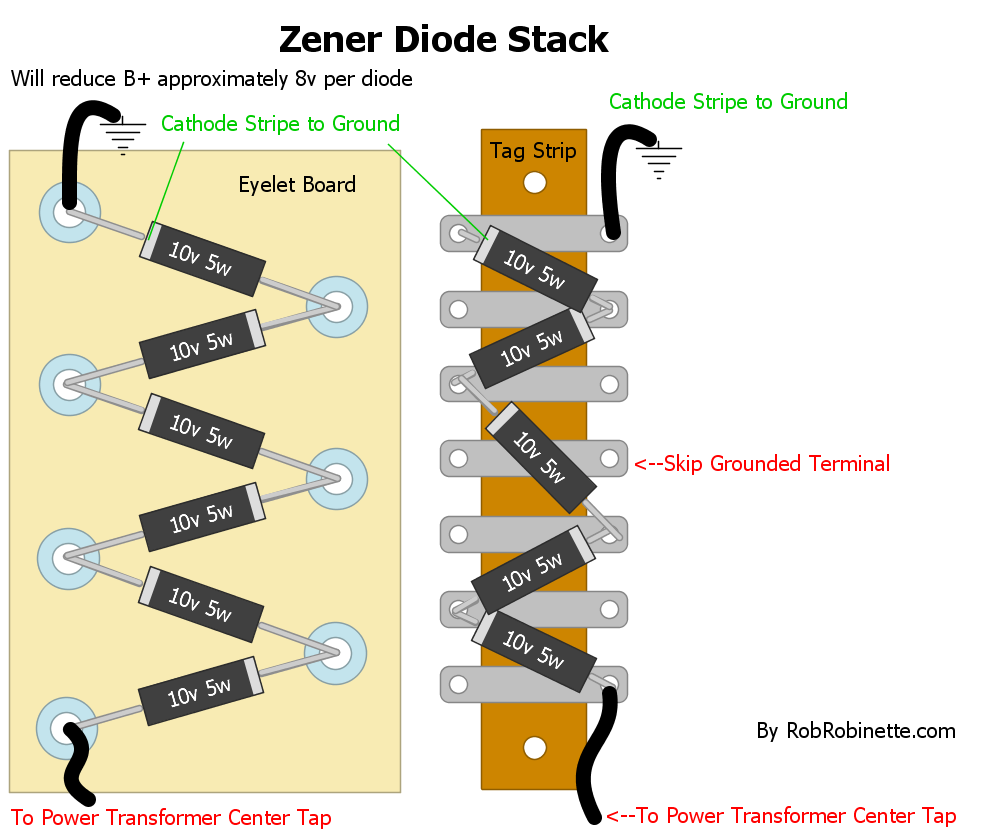Stevem wrote: ↑Sun Jun 04, 2023 12:47 pm
Are we not introducing some level of zener switching noise into the picture here?
If so then if our goal is low noise, be it 60 hz, 120 hz or switching hash noise, then why go this route with the zener’s just because we can?
I don't think so, although I haven't dug into it from that direction.
Just mulling it over in my head, the zeners in this setup are always "off" from their internal perspective. They just go into avalanche mode where the voltage across them pulls charge carriers across the reverse diode junction. This makes for nearly white "hiss" but not so much low frequencies. The zeners don't slam off, they just drop below avalanche voltage.
Diode switching noise is caused by the reversal of voltage across a conducting diode sweeping out the charge carriers in the conduction area and suddenly slamming off in nanoseconds, making an abrupt current transient that makes the parasitic inductance and capacitance of the wiring ring, often at RF frequencies. This makes a squark of RF that the circuit rectifies into a blip of audio at twice line frequency.
Avalanche hiss is more easily suppressed by the filter caps, being higher frequency. The RF blips are harder for the main capacitors to suppress because the electrolytic filter caps have bigger internal ESL; their impedance actually goes up with higher frequencies. This is one place where paralleling electros with smaller ceramic caps might help, although using fast, soft-off rectifiers like FREDs would just not generate the RF to start with.
I'd have to dig deeper, but my intuition says that the zeners won't add noticeable noise. But your intuition is good - be suspicious of add-on fixes. They could cause other issues and side effects.
I don't "believe" in science. I trust science. Science works, whether I believe in it or not.



